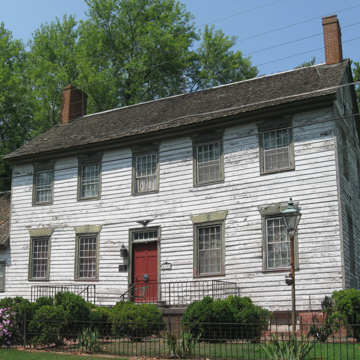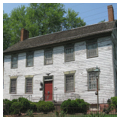A ferry carries travelers across the 500-foot-wide Nanticoke River at Woodland, a three-minute ride that represents a survival of a colonial institution into modern times, though the ferry is now diesel-powered and transports automobiles. The Cannon family operated it as early as the 1740s, and Jacob Cannon and his brother were merchants and traders who owned thousands of acres nearby. Jacob built Cannon Hall, a two-story frame house memorable for its big, original windows with curvy, folk-carved lintels. The date of the house is disputed; owners who restored the place in the 1960s tell me of a carpenter's diary of 1812 recording construction of the house, earlier than the usual c. 1820 date. Certain aspects of the dwelling, such as the tall brick foundations and center-passage plan, look back conservatively to eighteenth-century architecture and suggest Tidewater Maryland or Virginia. Architectural historian William Allen calls it “a wonderful transformation into wood of a distinctly masonry form.” A brick smokehouse stands nearby. Accounts of Cannon Hall recite its colorful lore: Jacob refused to move in after his fiancée jilted him, so the house stood empty for twenty years; a man he accused of stealing his “bee gum tree” shot him dead on the ferry landing in 1843.
You are here
Cannon Hall
If SAH Archipedia has been useful to you, please consider supporting it.
SAH Archipedia tells the story of the United States through its buildings, landscapes, and cities. This freely available resource empowers the public with authoritative knowledge that deepens their understanding and appreciation of the built environment. But the Society of Architectural Historians, which created SAH Archipedia with University of Virginia Press, needs your support to maintain the high-caliber research, writing, photography, cartography, editing, design, and programming that make SAH Archipedia a trusted online resource available to all who value the history of place, heritage tourism, and learning.





